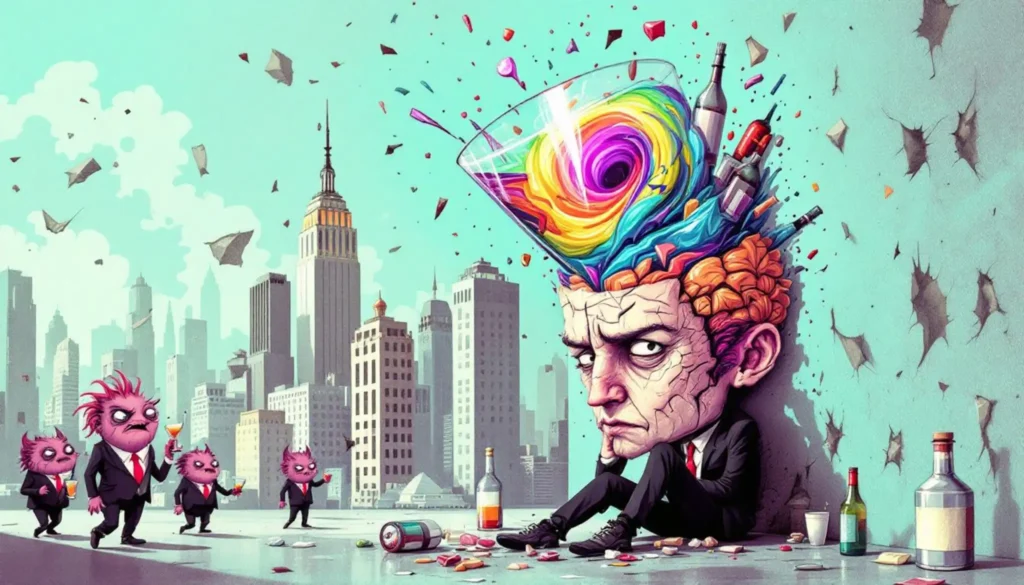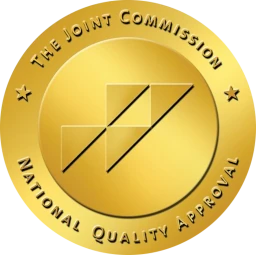Binge drinking is drinking a lot in a short space of time and getting to a BAC of 0.08% or higher. For men, this is five or more drinks in about two hours; for women, four or more drinks. Binge drinking is particularly prevalent among adults under the age of 35. This article will look at the binge drinking definition, the health risks and the factors that contribute to this behavior.
Key Takeaways
- Binge drinking is drinking a lot in a short time and getting to a BAC of 0.08% or higher, 6 units for women and 8 units for men.
- Health risks of binge drinking include immediate dangers like alcohol poisoning and long term risks like neurological damage, impaired immune function and increased risk of mental health disorders.
- Big factors that contribute to binge drinking are gender, socioeconomic status, peer pressure and social norms especially among adolescents and young adults, so we need targeted prevention and intervention strategies.
What is Binge Drinking?

Binge drinking defined is simply drinking a lot of alcoholic beverages in a short space of time, also known as binge alcohol consumption. This is heavy drinking to the point of intoxication, often to a blood alcohol concentration (BAC) of 0.08% or higher. For women this is more than 6 units of alcohol in one session, for men more than 8 units. To put it in perspective, for women binge drinking is about 3 pints of normal strength beer in one sitting.
The speed at which you drink is a big part of binge drinking. Drinking quickly can get your BAC to dangerous levels in no time and increase the risk of blackouts, injuries and other serious consequences. This pattern of drinking is not just about the amount but the pace, which has a big impact on the body and mind.
One of the scariest things about binge drinking is the severity and immediacy of the consequences. Binge drinking episodes are often accompanied by blackouts, injuries and other health and safety issues. These incidents not only put the individual at risk but also those around them, so the social implications are bigger than just the individual.
The definition of binge drinking also includes the physical impact on the body. A BAC of 0.08% or higher is the benchmark, that’s when the amount of alcohol in your blood has reached a level that impairs your cognitive and motor functions. This level of intoxication is linked to all sorts of risky behavior and negative outcomes.
Understanding what is binge drinking is the first step to recognizing the risks. Knowing what is binge drinking is allows you to make informed choices and reduce the risks.
How Many Drinks Constitute Binge Drinking?
The number of drinks that constitutes binge drinking varies slightly between men and women. For men it’s five or more drinks in 2 hours, for women it’s four or more drinks in the same timeframe. This is because of the physiological differences between the sexes, body composition and alcohol metabolism rates.
A standard drink in the United States is 0.6 fluid ounces or 14 grams of pure alcohol. This can help you gauge how much you’re drinking, whether it’s beer, wine, spirits or other types of alcoholic drinks. For example a 12 ounce beer, a 5 ounce glass of wine and a 1.5 ounce shot of distilled spirits are all one standard drink. So binge drinking can happen with fewer drinks if the alcohol content is higher than usual, especially when people drink alcohol.
The concept of blood alcohol concentration (BAC) brings BAC into the definition of binge drinking. A BAC of 0.08% or higher is considered intoxicated, which impairs judgement, coordination and reaction times. This level of intoxication is reached after the number of drinks for men and women within the 2 hour window.
Knowing the specific numbers that define binge drinking is key to prevention and education. Knowing these numbers helps you gauge your drinking and know when you’re at risk of binge drinking. This is especially important for young adults and college students who are more likely to engage in heavy episodic drinking.
The aim is to promote responsible drinking and reduce binge drinking episodes. By being aware of how many drinks you’re drinking and how fast you’re drinking you can take steps to avoid the harm caused by excessive alcohol consumption.
Factors that influence Binge Drinking
Several factors contribute to binge drinking and understanding these can help us develop targeted interventions. One of these is gender. Research shows that binge drinking is more common among men than women. This difference may be due to social norms and expectations as well as biological differences in how the body processes alcohol.
Women however tend to get intoxicated faster than men due to physiological differences. They have a higher blood alcohol level after consuming the same amount of alcohol. This increased susceptibility makes the risks and consequences of binge drinking more pronounced for women. In addition, binge drinking can adversely affect female reproductive hormone levels.
Socioeconomic factors also come into play. People with higher income and more education are more likely to binge drink. This may be due to lifestyle and social settings where alcohol consumption is part of socializing and networking. Higher disposable income means more opportunities to buy and drink.
Peer influence is another major factor especially among young adults and college students. The presence of alcohol use in peer groups increases the likelihood of binge drinking. Social events, parties and other gatherings where alcohol is available can create an environment that encourages excessive drinking.
Knowing these factors is key to addressing binge drinking through public health initiatives and education. By knowing what drives this behavior we can tailor our interventions to specific groups and settings and reduce binge drinking and its risks.
Health Risks of Binge Drinking

Binge drinking has many health risks some of which can be immediate and life threatening. One of the most severe is alcohol poisoning, a condition where the BAC rises to a level that depresses the body’s vital functions such as breathing and heart rate. This can lead to loss of consciousness, seizures and even death if not treated promptly.
Chronic binge drinking has long term effects on the body. It causes significant neurological damage to areas of the brain responsible for learning and memory. Over time this can lead to cognitive impairment including decision making and impulse control problems. The cardiovascular system is also at risk affecting both macrocirculation and microcirculation and binge drinking increases the risk of stroke by ten times.
The immune system is not immune either. Binge drinking can cripple the body’s ability to fight off infections making you more prone to illnesses. The pancreas can also suffer acute inflammation which can lead to severe abdominal pain and digestive problems.
Mental health is also affected. People who binge drink frequently are more likely to develop psychiatric disorders including depression and anxiety. These mental health issues can feed into the cycle of excessive drinking creating a vicious cycle that’s hard to break.
Knowing the health risks of binge drinking means we need to address this behavior. Both immediate and long term consequences means we need effective prevention and intervention strategies to protect our physical and mental health.
Binge Drinking Among Adolescents and Young Adults
Binge drinking is a major issue among adolescents and young adults. Globally 14% of 15-19 year olds binge drink. In Europe it’s even higher with some regions reporting over 50% of students binge drink. These statistics are alarming.
The average age of first drinking alcohol among adolescents is 15 years. Early initiation can have long term effects on their development and health. The developing adolescent brain is thought to be particularly susceptible to the neurotoxic effects of binge drinking. Adolescents who regularly participate in binge drinking tend to show neurocognitive deficits in frontal lobe processing.
College students are even more at risk due to the developmental and social changes they go through during emerging adulthood. The social environment of college with its drinking culture contributes to high rates of binge drinking among students.
The presence of alcohol use in peer groups increases the risk. Adolescents and young adults are more likely to binge drink if their friends do so. Motivations for binge drinking among adolescents include feeling more grown-up and fitting in with peers. This peer influence can lead to many negative outcomes, including alcohol abuse, traffic accidents, violent behavior, and even suicide.
Long term health risks for young people who binge drink are high. They are more likely to develop alcoholism, liver disease and other chronic health problems. Binge drinking can also lead to cognitive problems that affect decision making and executive functioning.
Targeted interventions are needed to address binge drinking among adolescents and young adults given the unique factors that affect this age group. Raising awareness and providing support can minimize risks and promote healthier behavior.
Emotional and Psychological Effects of Binge Drinking

The emotional and psychological effects of binge drinking are deep and wide ranging. One of the biggest impact is on mental health. People who binge drink often report chronic depression and high stress levels. The decline in mood is more pronounced than those who don’t drink excessively.
Anxiety disorders are also more common among binge drinkers. The link between binge drinking and anxiety creates a vicious cycle where people drink to cope with anxiety which in turn exacerbates their symptoms. If not addressed this cycle can lead to long term mental health problems.
Social withdrawal is another consequence of binge drinking. People who binge drink may start to pull away from social interactions and responsibilities. This withdrawal can lead to feelings of loneliness and discontent and further affect their emotional wellbeing.
The stigma around alcohol use disorder prevents people from seeking help. This additional psychological burden makes it even harder for binge drinkers to break free from their habits and seek the help they need. Fear of being judged and moral decay can be big barriers to recovery especially for those with substance abuse and alcohol dependence.
Raising awareness of the emotional and psychological effects of binge drinking is important to developing treatment and support systems. Addressing these issues can help people overcome their struggles and overall well being.
Treatment for Binge Drinking
Treatment is key to addressing binge drinking and its related problems. Most people with alcohol use disorder (AUD) can benefit from some form of treatment regardless of the severity of their situation. These treatment options range from medication to behavioral therapies, so there’s something for everyone.
Behavioral therapies aim to change drinking behavior and can include techniques such as cognitive-behavioral therapy and motivational enhancement. Motivational interviewing has been shown to reduce drinking among heavy drinking college students. These therapies help people understand the underlying causes of their binge drinking and develop healthier coping mechanisms.
Medications approved for AUD are non addictive and can help reduce cravings or manage withdrawal symptoms. Used in conjunction with therapy they can increase the chances of successful recovery.
Recreate Behavioral Health of Ohio offers a full range of services including medically supervised detox, residential treatment and various outpatient programs. The center uses evidence-based therapies to address the complexities of addiction and mental health disorders. Their approach includes developing individualized treatment plans that address underlying issues, not just addiction symptoms, in line with the mental health services administration.
A holistic and individualised approach, Recreate Behavioral Health of Ohio can help you overcome binge drinking and achieve long term sobriety.
Why Recreate Behavioral Health of Ohio
Recreate Behavioral Health of Ohio is the best place to get help for binge drinking. The center offers a full range of services to address addiction and mental health. Our programs are designed to meet the individual needs of each person, so a personalized approach to treatment is developed.
One of the big advantages of Recreate Ohio is their use of evidence based therapies. This includes traditional therapies like cognitive-behavioural therapy and holistic practices like yoga and art therapy. This integrated approach addresses the complexities of addiction and overall wellbeing.
Recreate Ohio also values community and peer support in the recovery process. They encourage participation in peer support groups and 12-Step programs and a sense of belonging and shared experience. This community approach is helpful to long term recovery.
Personalized care and holistic treatment make Recreate Behavioral Health of Ohio the perfect place to get help for binge drinking or any substance use disorder. We offer full support and a supportive environment so you can achieve long term sobriety and overall wellbeing.
Conclusion
In summary, binge drinking is a complex behavior with health and social consequences. It’s consuming large amounts of alcohol in a short space of time and getting severely intoxicated with various risks. Understanding the definitions and thresholds and the factors that contribute to this behaviour is key to prevention and intervention.
The health risks of binge drinking are many and far reaching, physical and mental. Adolescents and young adults are most at risk so targeted interventions are needed. The emotional and psychological factors make it even more complicated so comprehensive treatment options are required. Encouraging recreational and adventurous activities can be an alternative to alcohol misuse.
Recreate Behavioral Health of Ohio offers a holistic and individualized approach to treatment, so it’s the perfect place to get help. By addressing the underlying causes of binge drinking and offering full support we can help you achieve and maintain recovery.
Frequently Asked Questions
What exactly is binge drinking?
Binge drinking is the consumption of a significant amount of alcohol in a short period, resulting in a blood alcohol concentration (BAC) of 0.08% or higher. It generally involves more than six units for women and more than eight units for men in one session.
How many drinks constitute binge drinking?
Binge drinking is defined as consuming five or more drinks within two hours for men, and four or more drinks for women.
What are the health risks associated with binge drinking?
Binge drinking has many health risks, alcohol poisoning, cognitive impairment, cardiovascular problems, weakened immune system and psychiatric disorders. We need to be aware of these risks for better health outcomes.
Why is binge drinking a big deal for adolescents and young adults?
Binge drinking is a big deal for adolescents and young adults because of the long term health risks, cognitive impairment and increased risk of accidents and violence during this critical development stage. The consequences can have a lasting impact on their future wellbeing and safety.
How does treatment work for binge drinking?
Treatment can help you manage binge drinking by offering individualized behavioral therapies and medications to manage cravings and underlying issues. Get into a program and develop healthier drinking habits and long term recovery.
Sources:
https://www.sciencedirect.com/










